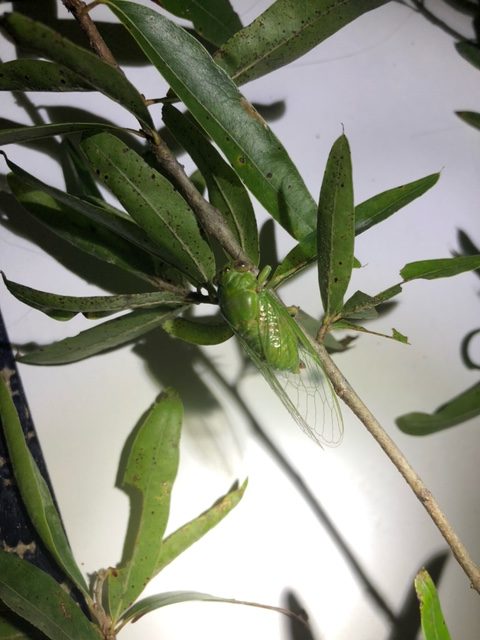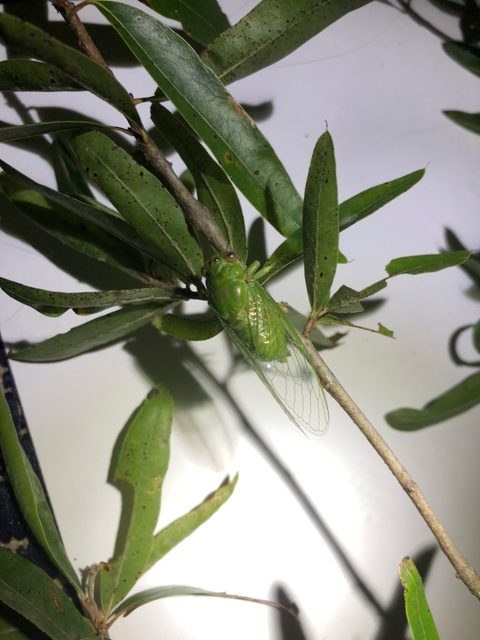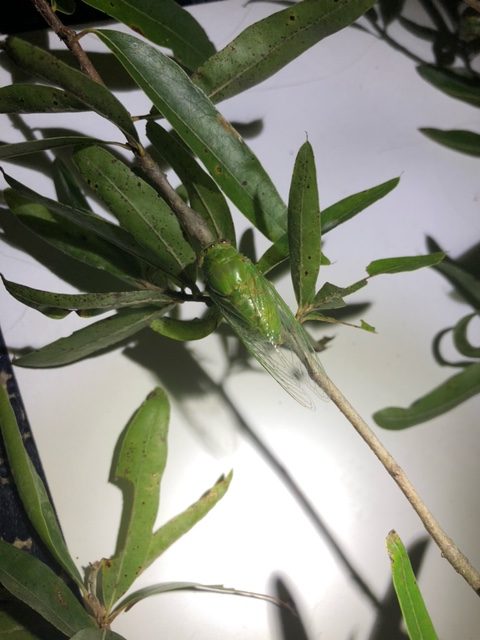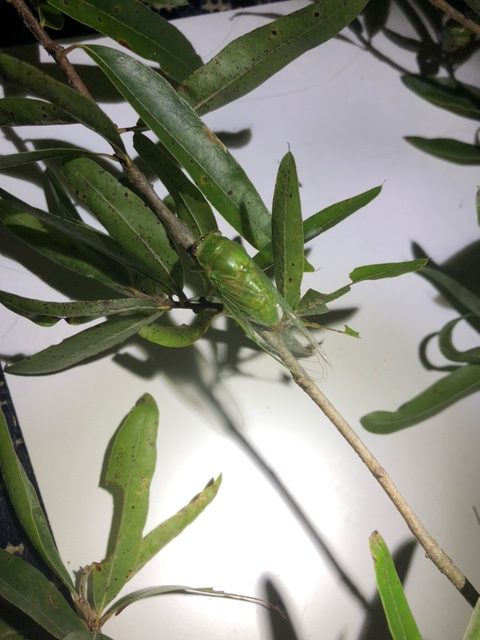Okanagana viridis Davis, 1918

Okanagana viridis photo by Coleman Cobbs.
Song type: Call
Source: ©Insect Singers | Species: O. viridis
Name, Location and Description
- Cicada Name: Okanagana viridis Davis, 1918
- Short Name: O. viridis
- Common Name: Cotton Green Cicada
- When: June-July
- Where it is found: AR, LA, MS, TX
- Maps: Biogeography of the Cicadas (Hemiptera: Cicadidae) of North America, North of Mexico [PDF]
- Description: Green
- Eye Color: n/a
- Pronotal Collar Color: n/a
- Identification: Bug Guide
- Identification: iNaturalist
- Taxonomic Information: Integrated Taxonomic Information System
- Song: Insect Singers
From Davis’ key to Okanagana1:
A. Male uncus not hooked at the extremity, sometimes sinuate.
B. Expanse of fore wings more than 50 mm.
CC. Base of the fore and hind wings not of the usual orange-red variegated with black.
Body and wing venation nearly entirely green; basal cell of fore wings clear. Expands 65 mm.
Classification:
Family: Cicadidae
Subfamily: Cicadettinae
Tribe: Tibicinini
Subtribe: Tibicinina
Genus: Okanagana
Species: Okanagana viridis Davis, 1918
List of sources
- Davis, William T. Cicadas of the genera Okanagana, Tibicinoides and Okanagodes, with descriptions of several new species. Journal of the New York Entomological Society. v27. 179-223. 1919. Link.
- Full Binomial Names: ITIS.gov
- Common names: BugGuide.net; The Songs of Insects by Lang Elliott and Wil Herschberger; personal memory.
- Locations: Biogeography of the Cicadas (Hemiptera: Cicadidae) of North America, North of Mexico by Allen F. Sanborn and Polly K. Phillips.
- Descriptions, Colors: personal observations from specimens or photos from many sources. Descriptions are not perfect, but may be helpful.
More Okanagana viridis photos by Coleman Cobbs:



Notes:
- Some descriptions are based on aged specimens which have lost some or a lot of their color.

The species also resides in Southeastern Oklahoma.
viridis has now become the type species of a new genus, Chlorocanta
https://mapress.com/zt/article/view/zootaxa.5346.5.1/51894
Nice! Thanks for sharing the news!
This is a very rare species, I have only ever seen two of these. They can only really be captured as tenerals or nymphs. The only other way to capture one (other than risking your life to climb to the tops of the tallest trees in a forest) is by luring them in with a bright light in or near woods with a lot of deciduous trees.